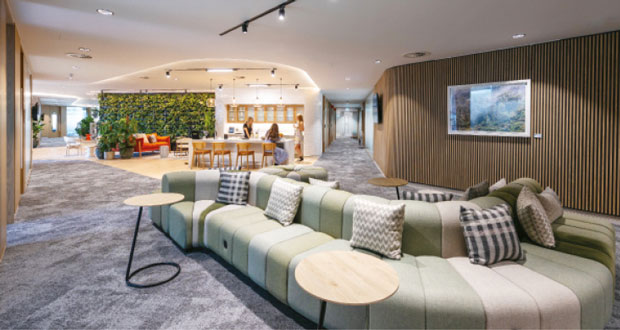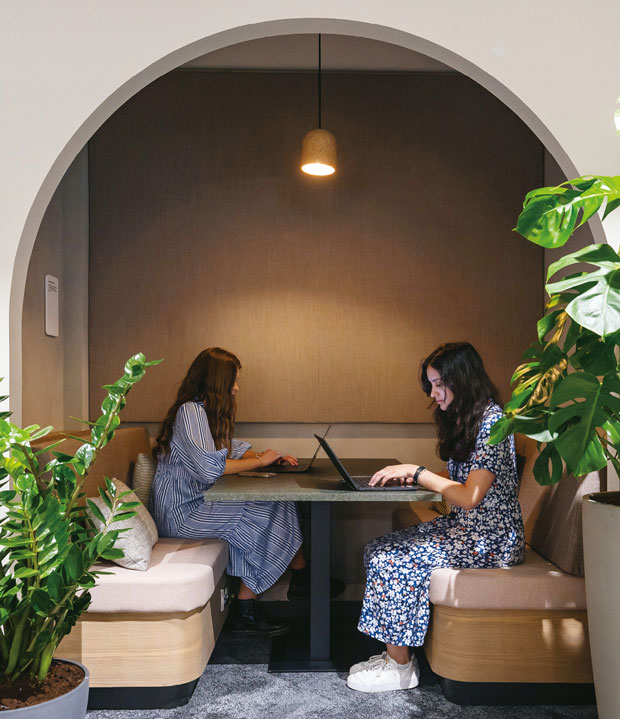With many commercial tenants now demanding top-flight amenities to help attract and retain the best talent, Hayley Blacker from workplace design and build company Interaction reveals today’s most sought-after office facilities
The shifting power balance between commercial property owners and tenants presents new opportunities for facilities managers. As businesses settle into hybrid ways of working, they are demanding top-flight amenities, flexible leases and workspaces, and close working partnerships with their landlord. This means the role of the facilities manager is more pivotal than ever in ensuring that the needs of the occupants align with the aspirations of the landlord.
This requires that FMs have a clear understanding of the types of facilities that are now most in demand and is particularly important if you are looking to encourage employees back to the workplace, attract the best talent or if you’re nearing the end of your lease and considering a move to new premises.
FLEXIBILITY IN THE OFFICE
If you’re a facilities manager who is tasked with looking for a brand-new workspace for your organisation, it’s worth keeping up to date with the way landlords are offering their spaces.
Flexibility is a key driver for organisations – both in the office space itself and their tenancies. Offering a fit-out as part of the lease is becoming increasingly popular, with landlords often creating a fitted space ready for a tenant to move into.
Creating a space that a business can treat as a blank canvas on which to add their own brand and personality can be very appealing. They attract best-in-class tenants and provide a competitive and convenient advantage. You may find that your prospective landlord is happy to fund or co-fund the entire fit-out ahead of you moving in.
On a practical level, units must be flexible in the headcounts they can accommodate. If you represent a high-growth business with ambitious plans, you may not use all the existing space initially available.
In the meantime, you may share space with other businesses or sub-let parts of the office in the initial stages of tenancy, then grow into the extra space as the number of employees increases over time. Having this option is key for commercial landlords, particularly as many SME businesses are planning to increase their headcounts in 2023.
It’s worth bearing this in mind if your organisation has outgrown its current premises and is looking to expand further. Co-working spaces are popular choices for freelancers, remote workers, and small businesses – and facilities managers can learn much from them. Although giving some of the floorplate to communal areas may initially put some property owners off, the long-term benefits are far greater than the maximisation of headcount.
These spaces grow vibrant communities within the building, which is something that tenants – especially those coming from serviced offices – have come to value. Shared social spaces, ground floor cafes, open receptions, and even internal communications and event programmes, help to unite different businesses.
This sense of community is an attractive pull for tenants and employees who want to join a lively space with opportunity for networking and relationship-building across businesses, departments and sectors.
Tenants want to build a collaborative relationship with their landlord and make the building their home. Facilities managers are integral in fostering this new dynamic, helping landlords who go the extra mile cultivate this relationship that proves mutually beneficial.






